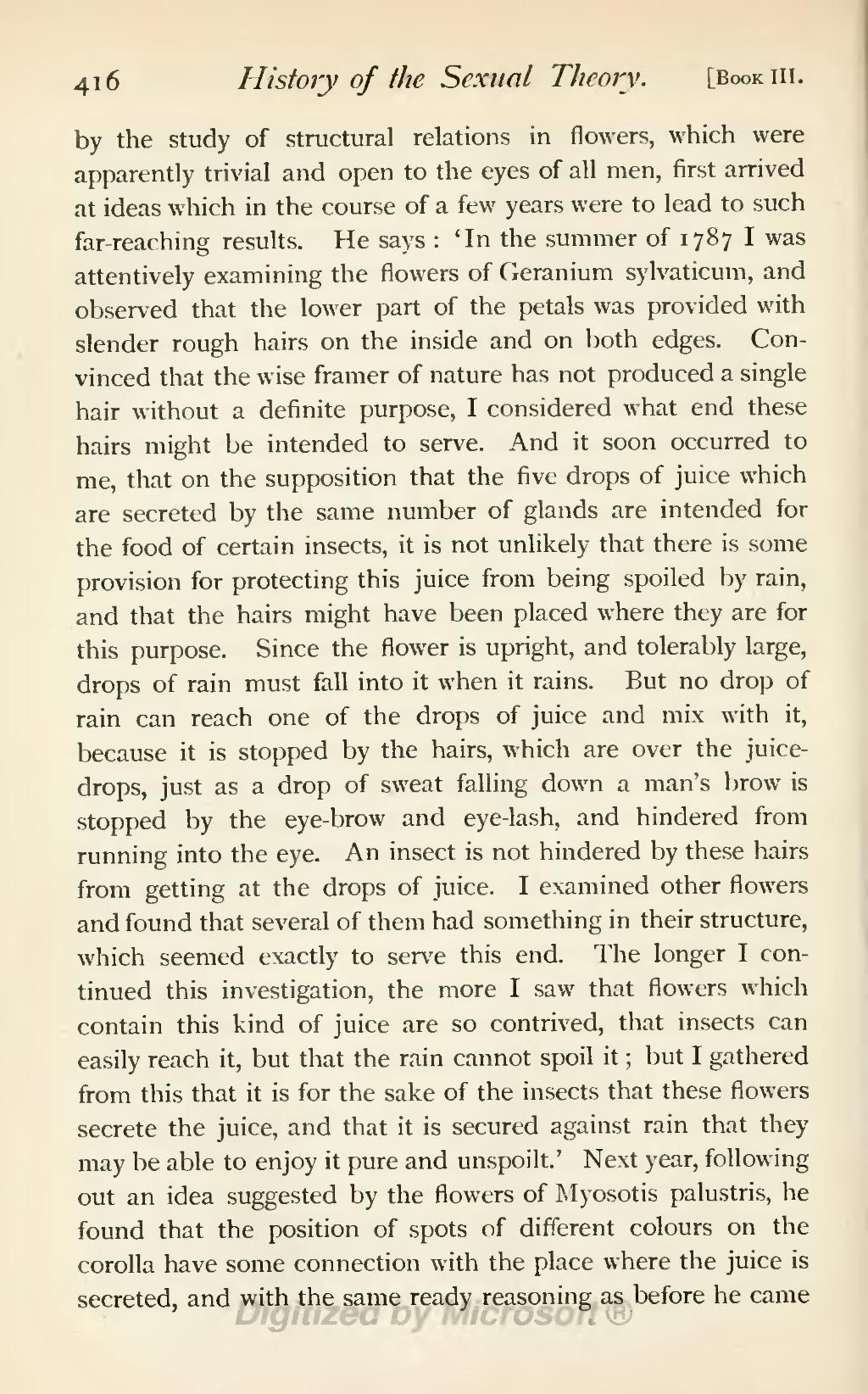by the study of structural relations in flowers, which were
apparently trivial and open to the eyes of all men, first arrived
at ideas which in the course of a few years were to lead to such
far-reaching results. He says: 'In the summer of 1787 I was attentively examining the flowers of Geranium sylvaticum, and observed that the lower part of the petals was provided with slender rough hairs on the inside and on both edges. Convinced that the wise framer of nature has not produced a single
hair without a definite purpose, I considered what end these hairs might be intended to serve. And it soon occurred to me, that on the supposition that the five drops of juice which
are secreted by the same number of glands are intended for
the food of certain insects, it is not unlikely that there is some
provision for protecting this juice from being spoiled by rain,
and that the hairs might have been placed where they are for
this purpose. Since the flower is upright, and tolerably large,
drops of rain must fall into it when it rains. But no drop of
rain can reach one of the drops of juice and mix with it,
because it is stopped by the hairs, which are over the juice-drops, just as a drop of sweat falling down a man's brow is
stopped by the eye-brow and eye-lash, and hindered from
running into the eye. An insect is not hindered by these hairs
from getting at the drops of juice. I examined other flowers
and found that several of them had something in their structure,
which seemed exactly to serve this end. The longer I continued this investigation, the more I saw that flowers which
contain this kind of juice are so contrived, that insects can
easily reach it, but that the rain cannot spoil it; but I gathered
from this that it is for the sake of the insects that these flowers
secrete the juice, and that it is secured against rain that they
may be able to enjoy it pure and unspoilt.' Next year, following
out an idea suggested by the flowers of Myosotis palustris, he
found that the position of spots of different colours on the
corolla have some connection with the place where the juice is
secreted, and with the same ready reasoning as before he came
Page:History of botany (Sachs; Garnsey).djvu/436
Jump to navigation
Jump to search
416
History of the Sexual Theory.
[BOOK III.
